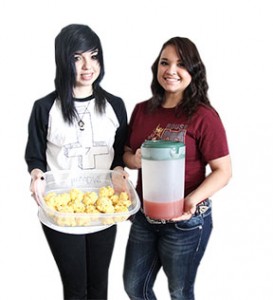Parfaits, wienerschnitzel and churros.
Over the past few weeks the foreign language classes have held their annual food days, making traditional dishes from their language’s cultural background.
“All of the foods that were brought were pretty unique,” sophomore Christina Lehner said. “The food was definitely different and I had fun learning about all the different countries.”
The food days teach the students how to reach outside of their comfort zone and about the cultures of all the different places their languages inhabit. Each student made a dish of their choice, the requirement being that the food be from a nation that speaks the language they’re learning.
“The goal is to have the students learn how to use vocab and the command tense to teach something,” French teacher Johanna Kuwajima. “It also lets them try something they wouldn’t normally try.”
In Catherine Hawes’ Spanish III class, students moved their desks into a circle and did a presentation explaining which country their food was from and a fact about the nation. After, they had the chance to try each other’s dishes.
“I just liked to taste all the different foods that were brought,” sophomore Sylvia Skenandore said. “It was cool to see other foods from different countries besides America.”
At the German food day, students brought in Spaetzle sausage, homemade German bread and Lebkuchen, a type of gingerbread cookie.
“I made Pfeffernusse cookies with sugar,” sophomore Meagan Stiger said. “I liked the Russian dumpling dish that was brought, they were delicious and full with flavor.”
Ukrainian foreign exchange student Olga Lukoshina brought the Russian dish to the German food day. She made pelmeni, dumplings that took two hours to make. German teacher William Johnson, who can also speak Russian, wanted her to bring a Russian dish for the class to try.
“They [the students] were surprised because they had never tried it before,” Lukoshina said. “Everything was really delicious. The put a lot of effort to cook these dishes. I found some nice recipes that I can bring home with me.”
The students had to bring the recipes and either present how to make their dish or make a how-to-video to be shown in front of the class.
“I think it went very well,” Hawes said. “We had a lot of different recipes and students, although presenting in Spanish for Level III is more difficult. I think students get a lot of benefit out of bringing something in, introducing it to the class and describing it, talking about it and what they learned.”
Yearbook staffers Katelynn Gomez and Kara Cagle also contributed to this story.



